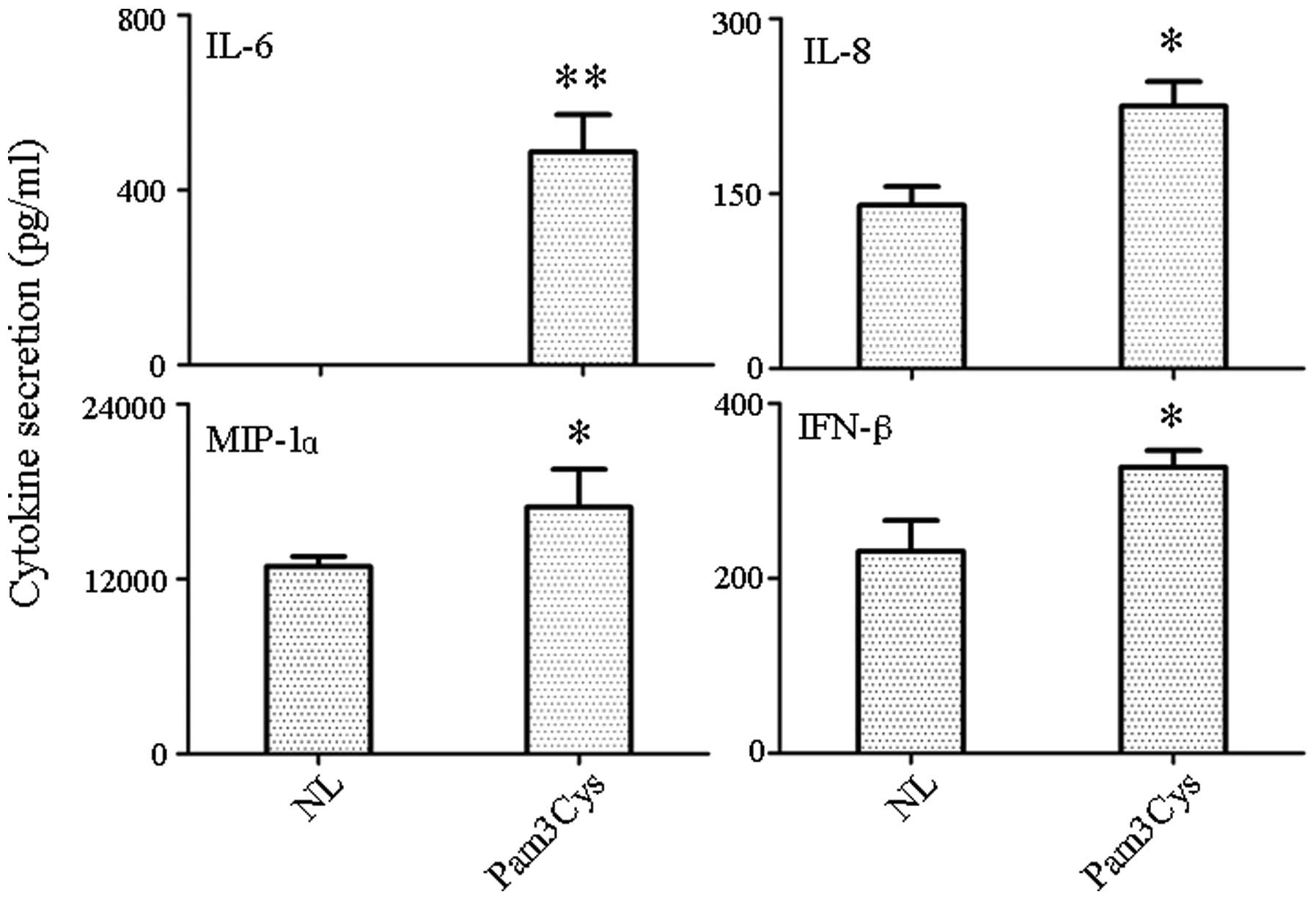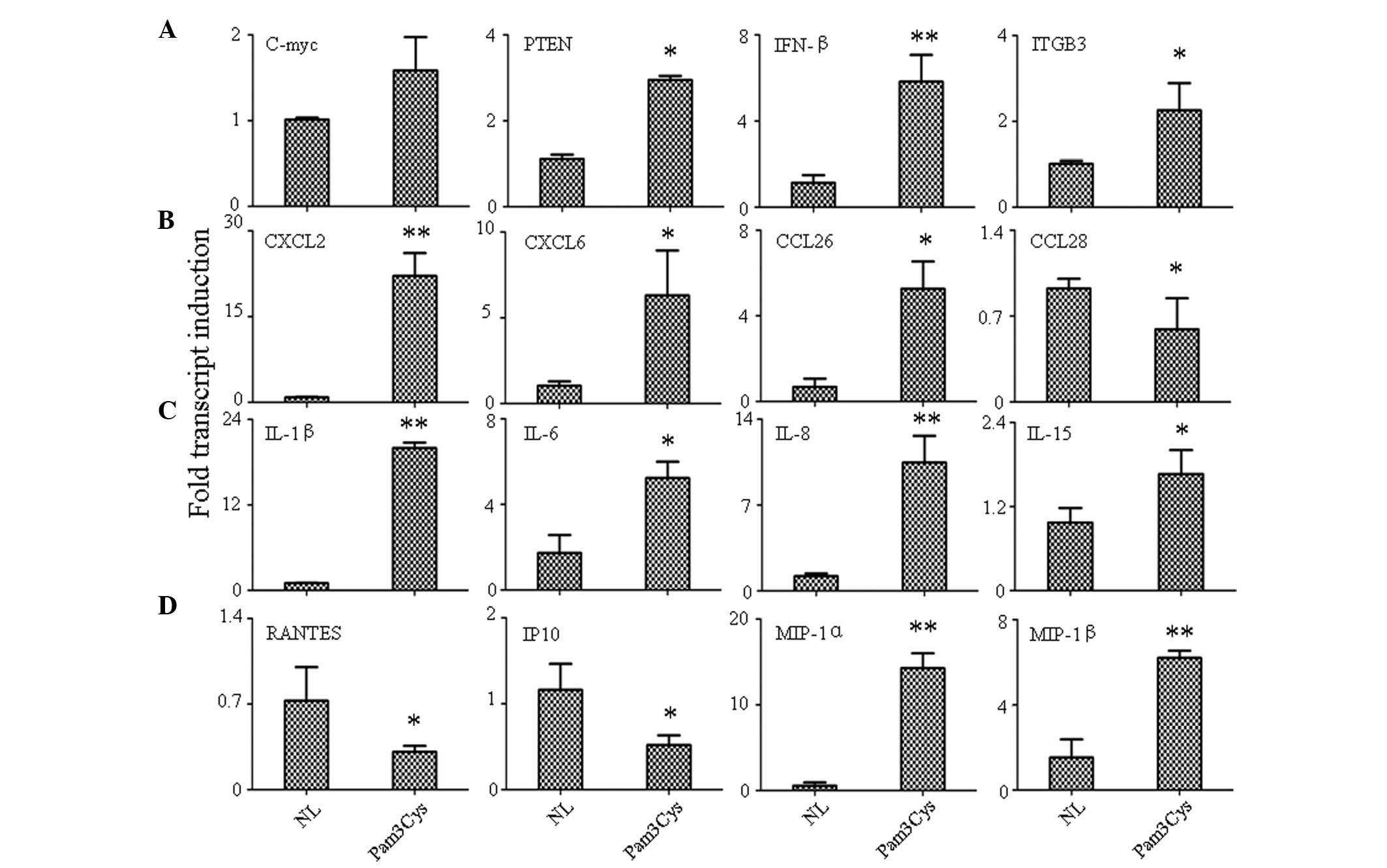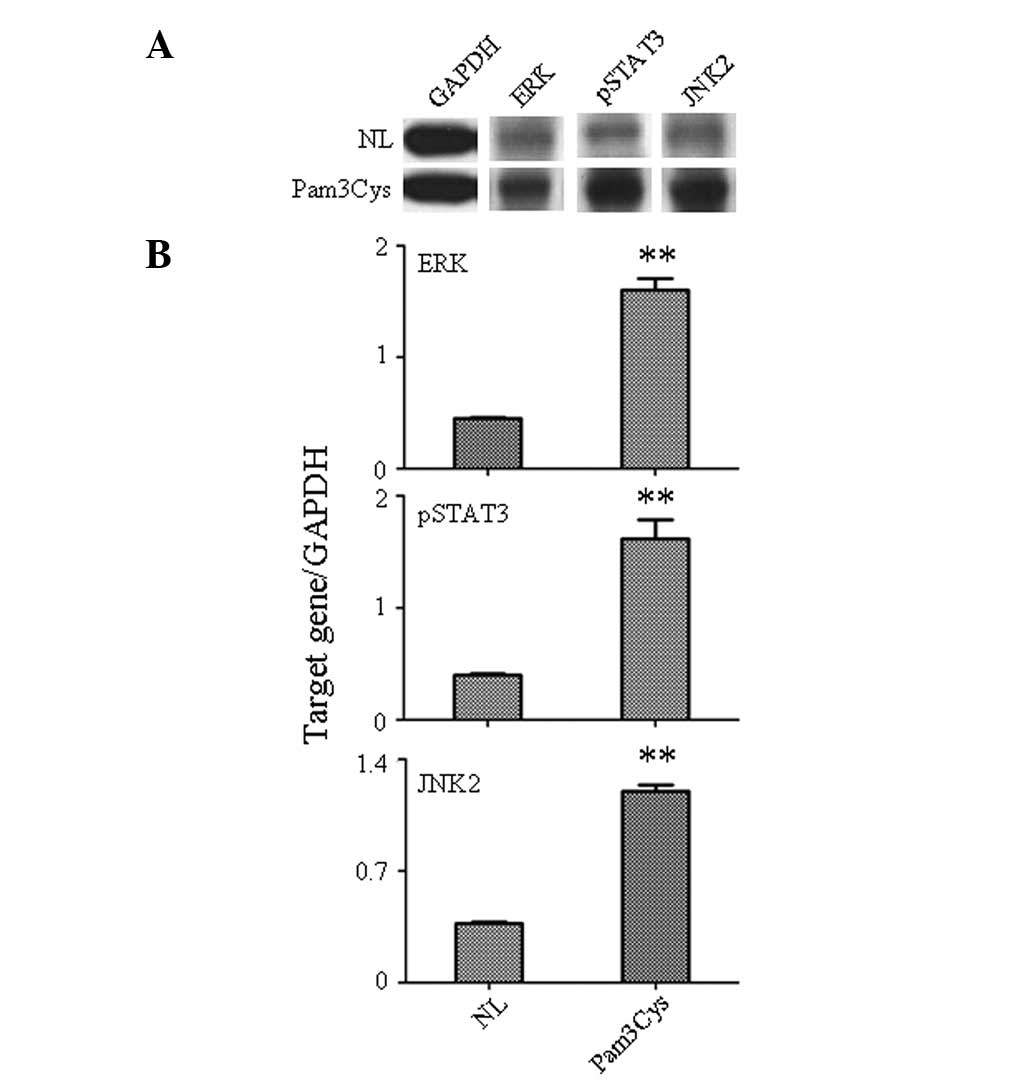Activation of the TLR1/2 pathway induces the shaping of the immune response status of peripheral blood leukocytes
- Authors:
-
View Affiliations
Affiliations: Department of Cardiology, Department of Pathology, West China Hospital, Sichuan University, Chengdu, Sichuan 610041, P.R. China, Laboratory of Pathology, Department of Pathology, West China Hospital, Sichuan University, Chengdu, Sichuan 610041, P.R. China
- Published online on: March 14, 2014 https://doi.org/10.3892/etm.2014.1621
-
Pages:
1708-1712
Metrics:
Total
Views: 0 (Spandidos Publications: | PMC Statistics:
)
Metrics:
Total PDF Downloads: 0 (Spandidos Publications: | PMC Statistics:
)
This article is mentioned in:
Abstract
Toll‑like receptors (TLRs) play an essential role in the activation and regulation of the innate and adaptive immune responses through the recognition of specific components of pathogens. TLR1/2 on the cell surface plays an important role in defending against Gram‑positive bacteria. The aim of the present study was to examine the expressional variation of immunomodulatory molecules in peripheral blood leukocytes (PBLs) treated with the TLR1/2 agonist, Pam3Cys. The quantitative polymerase chain reaction result showed dramatically increased expression of immune‑related factors treated with Pam3Cys. Antibody‑chip assays confirmed that activation of TLR1/2 could induce secretion of four important immune factors [interleukin (IL)‑6, IL‑8, macrophage inflammatory protein‑1α and interferon‑β). Western‑blot analysis indicated the upregulation of three significant signal kinase proteins (phosphorylated signal transducer and activator of transcription 3, extracellular signal‑related kinase and c‑Jun N‑terminal kinase 2). The study demonstrated that there were numerous molecules involved in the immune response of PBLs stimulated by the TLR1/2 ligand. Our future studies will focus on the mechanisms of these molecules in the TLR1/2 agonist‑mediated immune response.
View References
|
1
|
Akira S, Uematsu S and Takeuchi O:
Pathogen recognition and innate immunity. Cell. 124:783–801. 2006.
View Article : Google Scholar
|
|
2
|
Miggin SM and O’Neill LA: New insights
into the regulation of TLR signaling. J Leukoc Biol. 80:220–226.
2006. View Article : Google Scholar : PubMed/NCBI
|
|
3
|
Smith EL, Cools N, Lion E, et al: The
Toll-like receptor 7/8 agonist resiquimod greatly increases the
immunostimulatory capacity of human acute myeloid leukemia cells.
Cancer Immunol Immunother. 59:35–46. 2010. View Article : Google Scholar : PubMed/NCBI
|
|
4
|
Hornung V, Rothenfusser S, Britsch S, et
al: Quantitative expression of toll-like receptor 1–10 mRNA in
cellular subsets of human peripheral blood mononuclear cells and
sensitivity to CpG oligodeoxynucleotides. J Immunol. 168:4531–4537.
2002.
|
|
5
|
Ozinsky A, Underhill DM, Fontenot JD, et
al: The repertoire for pattern recognition of pathogens by the
innate immune system is defined by cooperation between toll-like
receptors. Proc Natl Acad Sci USA. 97:13766–13771. 2000. View Article : Google Scholar : PubMed/NCBI
|
|
6
|
Niemand C, Nimmesgern A, Haan S, et al:
Activation of STAT3 by IL-6 and IL-10 in primary human macrophages
is differentially modulated by suppressor of cytokine signaling 3.
J Immunol. 170:3263–3272. 2003. View Article : Google Scholar : PubMed/NCBI
|
|
7
|
Peyssonnaux C and Eychène A: The
Raf/MEK/ERK pathway: new concepts of activation. Biol Cell.
93:53–62. 2001. View Article : Google Scholar : PubMed/NCBI
|
|
8
|
Chen YR and Tan TH: The c-Jun N-terminal
kinase pathway and apoptotic signaling (Review). Int J Oncol.
16:651–652. 2000.PubMed/NCBI
|
|
9
|
Alexopoulou L, Thomas V, Schnare M, et al:
Hyporesponsiveness to vaccination with Borrelia burgdorferi
OspA in humans and in TLR1- and TLR2-deficient mice. Nat Med.
8:878–884. 2002.PubMed/NCBI
|
|
10
|
Kwok YH, Hutchinson MR, Gentgall MG and
Rolan PE: Increased responsiveness of peripheral blood mononuclear
cells to in vitro TLR 2, 4 and 7 ligand stimulation in chronic pain
patients. PloS One. 7:e442322012. View Article : Google Scholar : PubMed/NCBI
|












